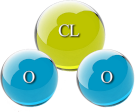Protocol C: Difference between revisions
Created page with "=== C) Protocol C 10 (classic continuous) === ===== ● Protocol C = 10 ml of CDS in 1 liter of drinking water, divided into 10 doses of 100 ml per day. ===== Protocol C is the most widely used method to treat various diseases and is also an effective procedure for detoxification. To date, no serious side effects or unwanted interactions have been reported, and CDS usually does not cause diarrhea as it is completely absorbed in the first part of the stomach, being a gas..." |
|||
| Line 1: | Line 1: | ||
== C) Protocol C 10 (classic continuous) == | |||
===== ● Protocol C = 10 ml of CDS in 1 liter of drinking water, divided into 10 doses of 100 ml per day. ===== | ===== ● Protocol C = 10 ml of CDS in 1 liter of drinking water, divided into 10 doses of 100 ml per day. ===== | ||
Revision as of 13:34, 22 August 2024
C) Protocol C 10 (classic continuous)
● Protocol C = 10 ml of CDS in 1 liter of drinking water, divided into 10 doses of 100 ml per day.
Protocol C is the most widely used method to treat various diseases and is also an effective procedure for detoxification. To date, no serious side effects or unwanted interactions have been reported, and CDS usually does not cause diarrhea as it is completely absorbed in the first part of the stomach, being a gas dissolved in water. If other medications are being taken, one hour should be allowed to pass to ensure that CDS does not lose effectiveness.
To follow this protocol, it is recommended to add 10 ml of CDS 3000 ppm to 1 liter of water per day.
One portion should be taken every hour until the contents of the bottle are finished. This daily dose is equivalent to a concentration of 0.003% or 3 ppm (parts per million) per serving, or 30 mg of ClO2 in water per day, and is considered a safe, non-toxic range.
This protocol is the most common and is indicated in case of doubts about how to get started. The numerical information after the letter C refers to the amount in ml of concentrated chlorine dioxide solution, such as C10, C15, or C20 (the daily dose can be at room temperature if the container is tightly closed).
If you have any doubts about the dosage of a medication to treat a disease, it is suggested to start with protocol "C" as soon as possible and adjust the dosage according to your well-being. Later, if necessary, additional protocols can be incorporated.
In cases of severe disease, the dose can be progressively increased up to 15 ml in separate doses taken throughout the day and according to the condition, up to a maximum of 30 ml per liter of water to avoid dryness and itching in the throat. If it is necessary to take more in very severe cases, another bottle of water with additional CDS should be prepared and consumed.
The dose can be reduced if discomfort or nausea is felt. It is not recommended to exceed 60 ml in 12 daily intakes, and it is preferable to add other non-oral protocols such as E, D, B, K, R, etc., in severe cases.
The duration of use or application will depend on individual needs and should continue until one feels recovered (dose response). It can be used permanently without pause due to its non-toxicity at these doses, but preferably only if needed.
